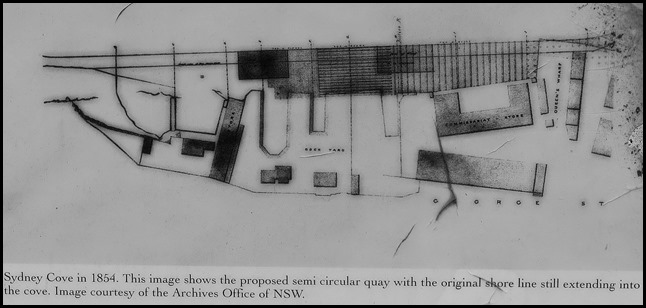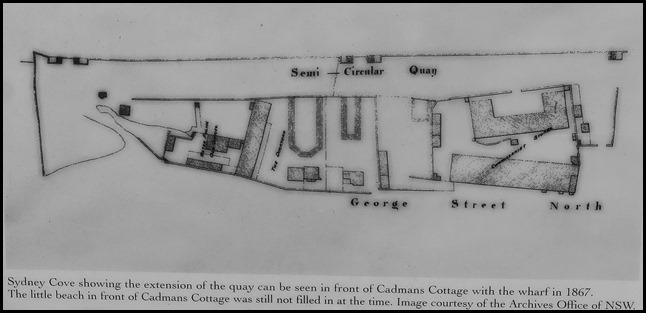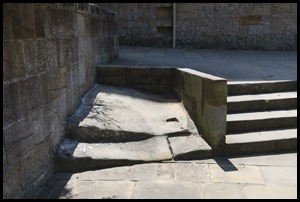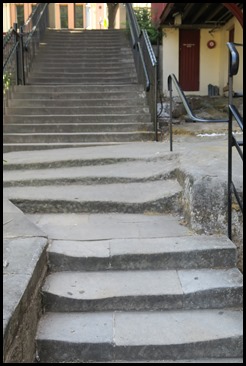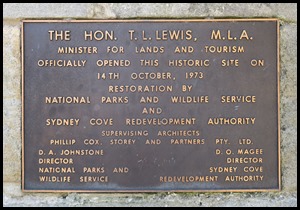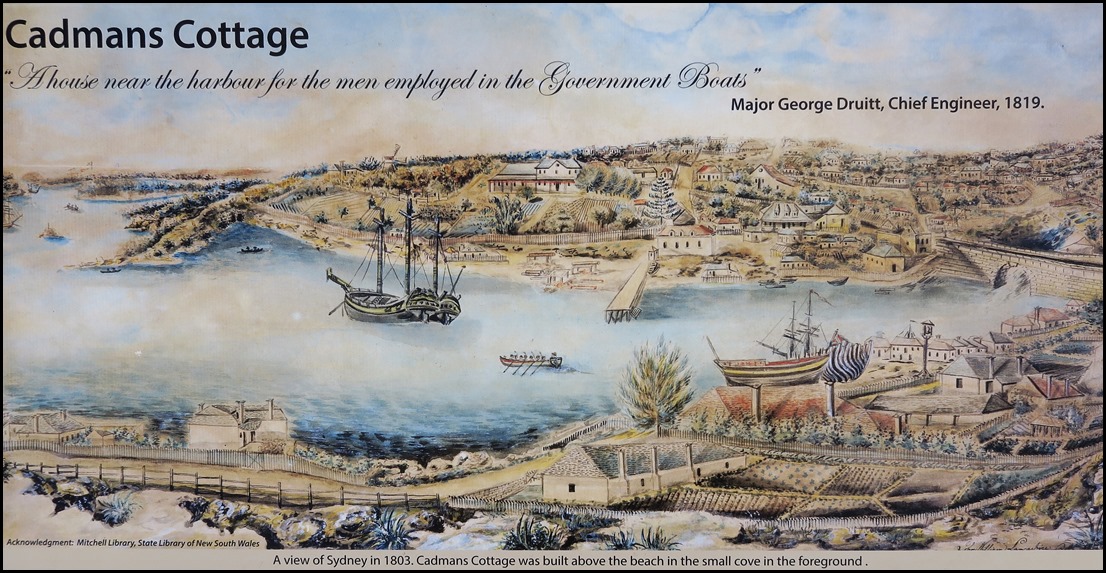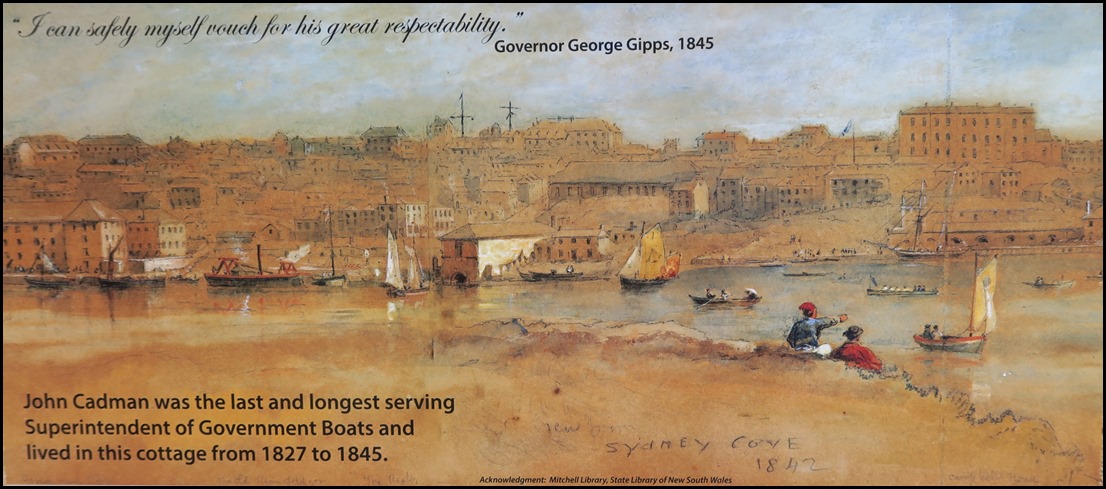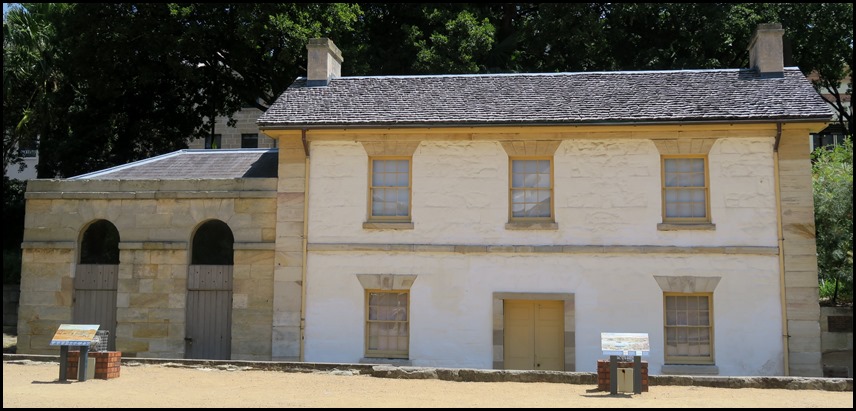Cadmans

|
A Bimble on The Rocks,
Beginning at John Cadmans Cottage
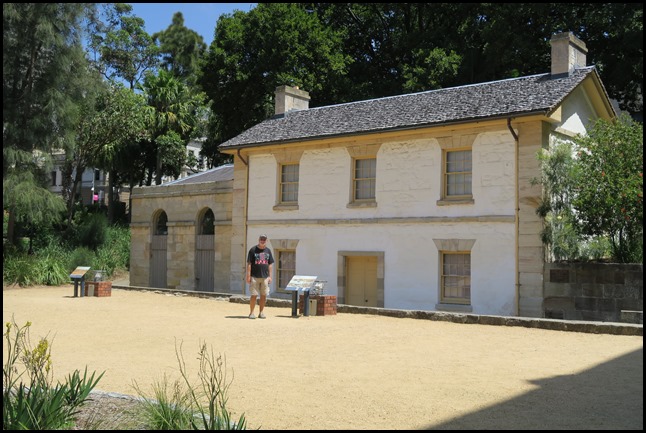 Bear
stands in front of Cadman’s
Cottage.
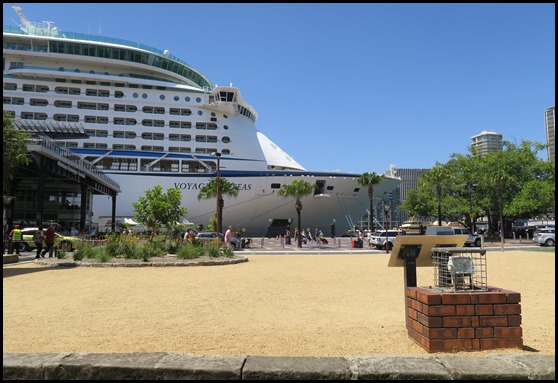 Cadmans Cottage is the oldest surviving residential building in Sydney, having been built in 1816 for the use of the governmental coxswains and their crews. The building is heavily steeped in the history of Sydney, also claiming the title as the first building to have been built on the shoreline of The Rocks area. It is claimed that during high tide, the water would come within 8 feet (2.4 m) of Cadmans Cottage; however, due to the reclamation of land during the building of Circular Quay, the waterline has moved about a hundred metres away since 1816. We stood with our back to the house and looked toward the cruise ship dock, the sandstone ledge just in front of us. This sandstone ledge represents the location of the original wharf that existed when the Cottage was first built and used as a Coxswain’s barracks. The remains of the original wharf still exist approximately two metres below this mock wharf. Cadmans Cottage was built to house the Government Coxswain who supervised the operations of the government boats and their crews. The government boats transported government officials around Sydney and up the Parramatta River. They also moved stores up to Parramatta and other outlying settlements, and carried convicts to their work assignments. Sydney’s waterways provided the main avenues for transport for early settlers as roads were few and in poor condition. Considering the importance of water travel around this time Cadmans Cottage would have been the centre for activity in the harbour.
The building has had several different uses in its lifetime—first and foremost as the abode of the four governmental coxswains (from 1816 until 1845), the headquarters of the A major archaeological investigation occurred in 1988 (in preparation for the bicentennial redevelopment) and since then, only minor maintenance works have been completed on the building. The building was used as the home for the Sydney Harbour National Parks Information Centre and could be viewed by the public. Now sadly, locked and empty.
The back of the house.
The old steps beside the house with the new ones. The steps going up to the Rocks – some old, some new and the plaque outside.
Sydney Cove, 1803.
Cadmans Cottage was built in 1816 on the shoreline next to the Government Dockyard for the Superintendent of Government Boats and the coxswains, boat crews and labourers, most of whom were convicts. Government sailing boats and row-boats transported timber, shells and wood to make lime, grass for livestock, stores, dispatches and the Governor himself between the colony’s settlements. There were only two Government boats in 1798, but this increased to twenty eight by 1821, ranging in size from schooners to jolly boats.
Sydney Cove, 1842. John Cadman was born in 1772. Whilst he
was working as a publican, John stole a horse and was arrested at Bewdley. He
was sentenced to death at Worcester Assizes, this was commuted to transportation
to the colony. John
came to Australia aboard the Barwell, which left Portsmouth on the 7th of
November 1797 reaching Sydney on the 18th of May 1798.
In
1806 he was working in Castle Hill as a convict labourer, then transferred to
the Government Dockyard in 1809. In 1809, Cadman became the coxswain of a
government boat. Whilst in the service of the Government as a coxswain, he lost
an eye.
In
1813 he was appointed Coxswain of Timber and Lumber Boat, and received a
conditional pardon in 1814 from Governor Lachlan Macquarie.
He
received a free pardon from Governor Macquarie in 1821 after serving four years
as Coxswain on the Antelope.
From 1823 to 1826 John was Master of the thirty ton cutter
Mars which took twenty five prisoners to Newcastle in 1825. The
Mars was wrecked off Port Stephens
Appointed Superintendent of Government
Boats and moved into Cadmans Cottage in 1827 on a salary of ninety one pounds a
year.
John obtained permission to marry convict Elizabeth Mortimer
on the 26th of October 1930 and continued to live in the cottage with his new
wife and two step daughters.
In 1845 John retired after forty five years of Government
service [the longest time served by a governmental Coxswain until the position
was abolished after his retirement] and was awarded one hundred and eighty two
pounds as a retiring gratuity by Governor Gipps.
John Cadman died on the 12th of November 1848 at the Steam
Packet Inn which he had bought in 1844 and was buried
in the old Devonshire Street
Cemetery.
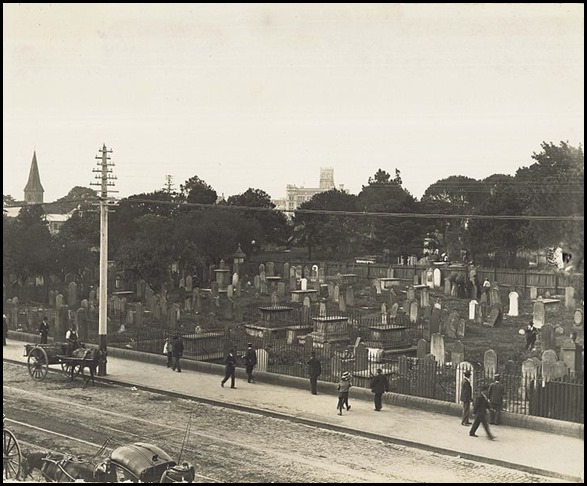 The Devonshire Street Cemetery – kind permission of the State Records Office NSW (also known incorrectly as the Brickfield Cemetery or Sandhills Cemetery ) was located between Eddy Avenue and Elizabeth Street, and between Chalmers and Devonshire Streets, at Brickfield Hill, in Sydney. It was consecrated in 1820. The Jewish section was used from 1832. By 1860, the cemetery was full, and it was closed in 1867. In 1901, the cemetery was resumed to allow for the development of Central railway station, Sydney and representatives of deceased persons buried in the Devonshire Street cemetery were given two months to arrange for exhumation and removal of remains from the cemetery. All reasonable costs were borne by the Government of New South Wales. The remains that were unclaimed were relocated to a purpose-built cemetery named Bunnerong Cemetery. Remains that were claimed were transferred to a number of cemeteries as listed below. Bunnerong Cemetery, south of the city, had a tram line constructed to make the removal of recasketed remains as simple as possible. Bunnerong Cemetery was next to the Botany Cemetery and, in the early 1970’s, was absorbed by that cemetery to create the Eastern Suburbs Memorial Park. We hope John was indeed relocated here and that by chance we visited him on our road trip to Botany Bay.
ALL IN ALL I HOPE THE HOUSE IS LOOKED AFTER FOR GENERATIONS TO COME VERY INTERESTING PIECE OF HISTORY TUCKED WAY
|
